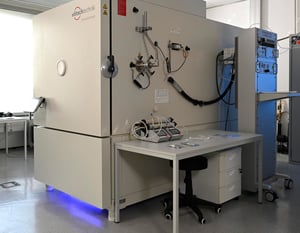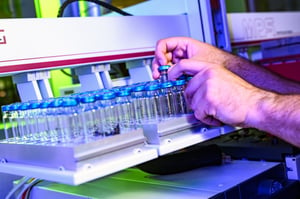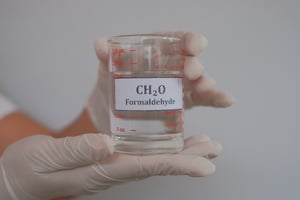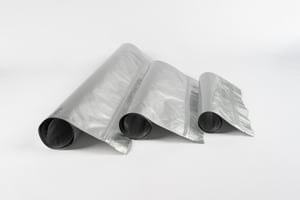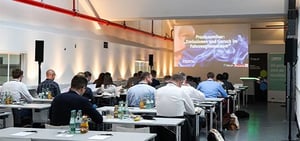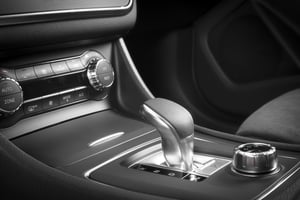
Fogging
Determination of the fogging behavior of materials used in vehicle interiors
FOGGING TEST IN THE
AUTOMOBILE INTERIOR
EVALUATION OF THE MEDIA RESISTANCE OF TEXTILES IN VEHICLES
As a testing service provider in the automotive sector, we attach great importance to the comprehensive evaluation of the media resistance of textiles used in vehicles. A central aspect of this evaluation is the soiling and cleaning behavior, which is decisive for the longevity and comfort of the vehicle interior.
In accordance with VDA standards, we examine how textiles react to various media that may occur in daily use, such as lubricants, cleaning agents, food and personal care products. Both the ability of the materials to repel dirt and their ease of cleaning play a decisive role here.

Fogging test methods
- DIN 75201-A (reflectrometric)
- DIN 75201-B (gravimetric)
- PV 3015 (Volkswagen)
- GMW 3235-A (General Motors Worldwide)
- PSA D45 1727
- and much more.
Are you looking for an exam? Standard? Specifications?
Accredited & certified tests
CONTACT OUR EXPERTS
Description. Lorem ipsum dolor sit amet, consetetur sadipscing elitr, sed diam nonumy eirmod tempor invidunt ut labore et
- Tab Title






Resistance to soiling and chemicals
In our tests, we evaluate how easily textiles can be cleaned by various types of soiling, be it food, liquids or dust. We use standardized methods to test the efficiency of different cleaning processes. The aim is to find out how well the textiles retain their original properties after cleaning and whether there are any changes in color, structure or strength.
Another important aspect is the chemical resistance of the textiles to cleaning agents. Many products used in vehicles contain aggressive chemicals. Our tests simulate the contact of these cleaning agents with the textiles over longer periods of time to ensure that they are not only easy to clean, but also retain their physical properties after use.
Our expertise and modern testing technologies ensure that the textiles in vehicles meet the highest standards. This not only supports the innovative strength of manufacturers, but also strengthens consumer confidence in the quality and durability of the products .
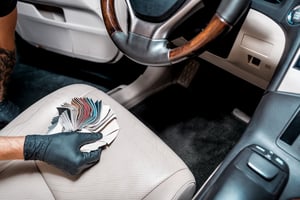

Frequently asked questions about the fogging test
The sample quantities required for a fogging test depend on the standard and the test method used. Here are the general guidelines:
1. standard DIN 75201 (type A and type B)
-
Type A (glass plate method):
A sample quantity of 10 cm² is typically required. The sample is placed on a heated plate in a sealed chamber and the volatiles released condense on a glass plate above. -
Type B (aluminum foil method):
Similar to type A, a sample volume of approximately 10 cm² is used. However, the volatile substances condense on a cooled aluminum foil.
2. standard ISO 6452 (international standard)
- Sample quantity:
Again, a sample size of about 10 cm² is typically required to evaluate the amount of volatiles released at elevated temperature.
3. other specific requirements
Depending on the specific requirements of the customer or OEM standards, sample quantities may vary. It is important to check the respective standards or test requirements carefully.
Method A - Reflectometric method:
- Principle: This method measures the change in reflectivity on a glass plate on which volatile components from the material sample are deposited.
- Procedure: A material sample is heated in a beaker while a glass plate above it is cooled to 21°C. The temperature difference causes the volatile components to condense on the glass plate. The reflectance index of the fogged glass plate is then measured to determine the amount of condensed material.
- Application: This method is particularly suitable for materials for which an exact determination of the optical fog effect is required.
Method B - Gravimetric method:
- Principle: This method measures the weight of condensed volatiles on an aluminum foil.
- Procedure: The material sample is heated in a beaker while an aluminum foil disc is cooled to 21°C. After 16 hours, the amount of condensed material on the foil is weighed.
- Application: This method is ideal for an accurate quantitative determination of the amount of condensed volatiles.


